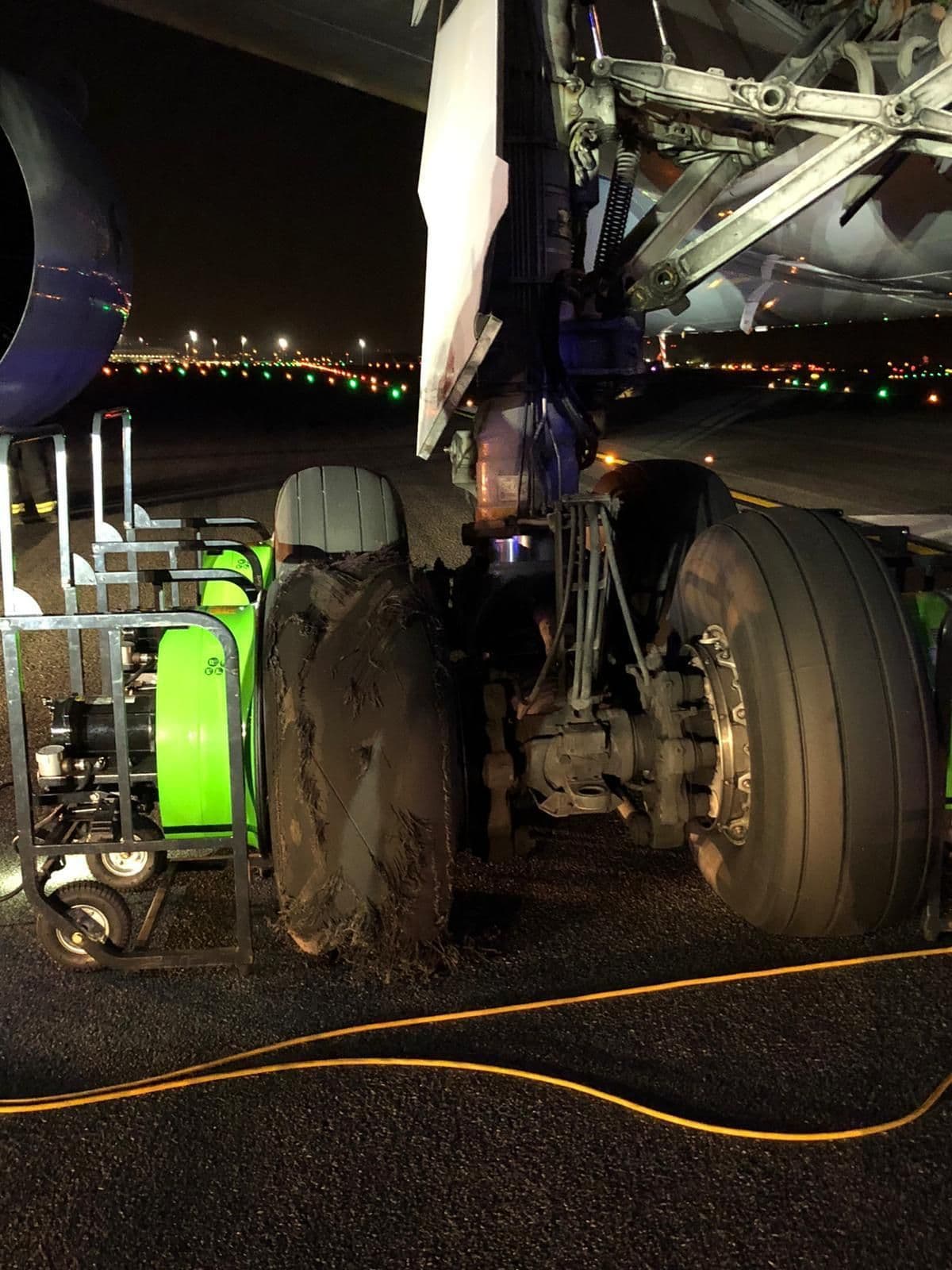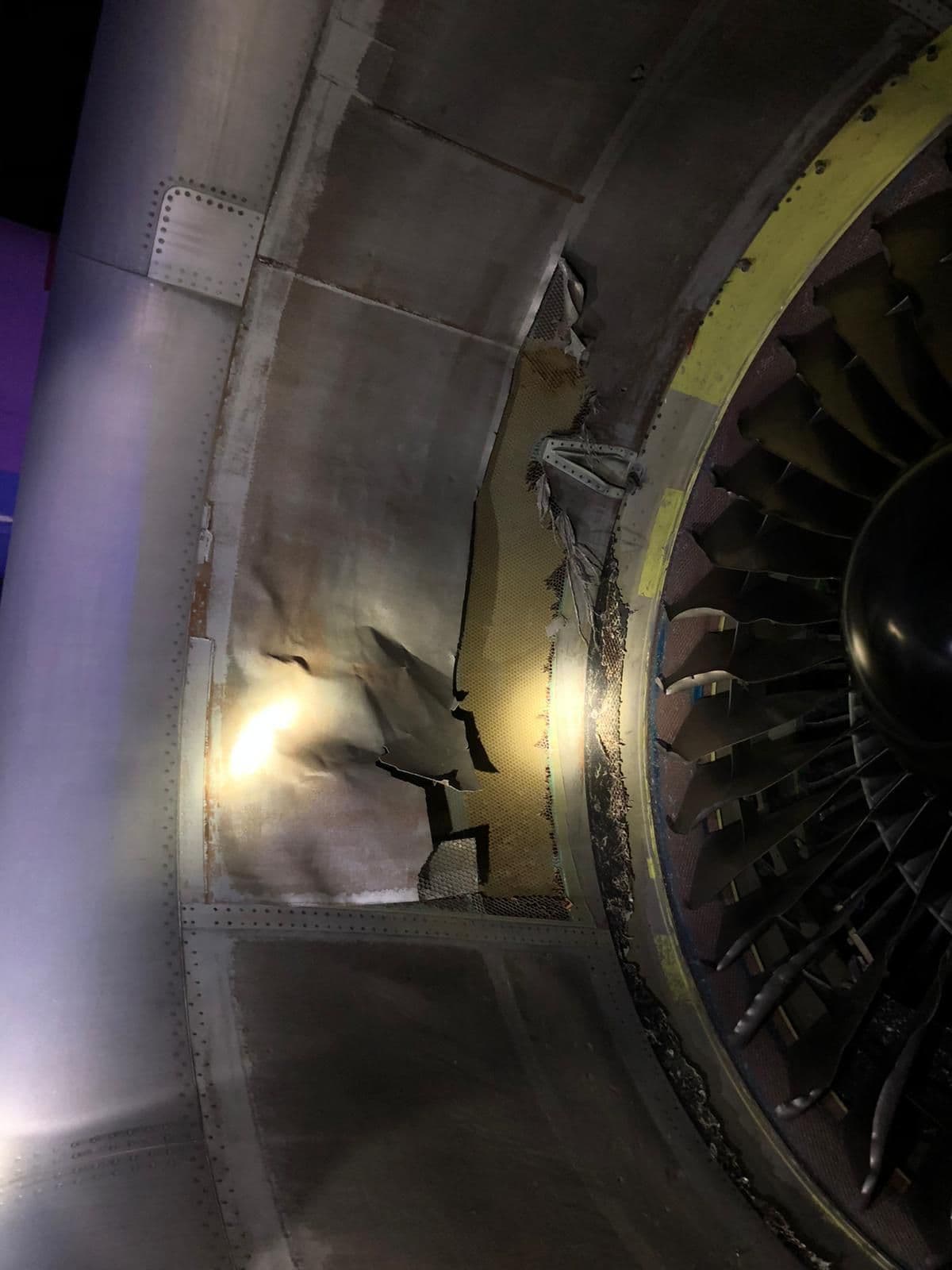Air Canada 767 Problems at Madrid
Join Date: Sep 2005
Location: ???
Posts: 261
Likes: 0
Received 0 Likes
on
0 Posts
holding for 4 hours on 1 engine due to overweight landing/tyre damage. I havent done the landing perf assessment but I doubt it would have been a major problem to bring it right back
Join Date: Aug 1998
Location: the ridge where the west commences
Posts: 770
Likes: 0
Received 0 Likes
on
0 Posts
If you have departed from a runway you can safely land on that runway with one engine, or safely go-around after a single-engine approach to that runway. This assessment can be done in one half of a second. It is unclear what proportion of the four hours was occupied by this assessment.
Join Date: Jan 2014
Location: Melbourne
Age: 68
Posts: 3
Likes: 0
Received 0 Likes
on
0 Posts
Don’t know about the B767 but on the B737 if the engine runs surge and stall free at reduced thrust and engine indications are stable there is no requirement to land at the nearest suitable airport. Suspect they did a good job.
Join Date: Mar 2003
Location: Stansted
Posts: 210
Likes: 0
Received 0 Likes
on
0 Posts
Bringing it straight back may be ok In terms of performance and distance etc but tyre speed limits may be a factor at very high weights and certain ambient conditions and light winds.
Can’t speak for 767 but on 738 it’s 200mph and that can be achieved on touchdown at certain high weights and the right ambient conditions.
Losing more tyres on landing due to exceeding tyre speed limits may have been a consideration.
ps especially if planning less than normal flap settings for landing after tyre damage to engine or flaps etc
Can’t speak for 767 but on 738 it’s 200mph and that can be achieved on touchdown at certain high weights and the right ambient conditions.
Losing more tyres on landing due to exceeding tyre speed limits may have been a consideration.
ps especially if planning less than normal flap settings for landing after tyre damage to engine or flaps etc
Join Date: Nov 2018
Location: Bonvoy Marriott
Posts: 408
Likes: 0
Received 0 Likes
on
0 Posts
on avherald it is stated that they had one MLG tyre blown and they shut down the #1 engine. The info of the one tyre came apparently from the f18.
I am purely wondering, not judging, why did they continue for so long on one engine?
This is a sticky situation. Continue with only one engine or land at high Gross Weight with (at least) one tyre damaged. I think given the info I probably would have landed “at the nearest suitable airport”. In any case, they landed safely so kudos to the crew.
I am purely wondering, not judging, why did they continue for so long on one engine?
This is a sticky situation. Continue with only one engine or land at high Gross Weight with (at least) one tyre damaged. I think given the info I probably would have landed “at the nearest suitable airport”. In any case, they landed safely so kudos to the crew.
Join Date: Aug 2007
Location: UK
Posts: 0
Likes: 0
Received 0 Likes
on
0 Posts
This moves into the "multi fail" scenario. One engine out, land. Yes , Drop the pilot . We would all love to live in your easy world . But these guys faced potential of gear problem too . Burn fuel to lowest LW. Now, two scenarios tied together and you see why we are paid all this money eh ? Very good co-ordinated decisions led to safe outcome. Are we asked for anything more ?Tough job well done indeed.
This moves into the "multi fail" scenario. One engine out, land. Yes , Drop the pilot . We would all love to live in your easy world . But these guys faced potential of gear problem too . Burn fuel to lowest LW. Now, two scenarios tied together and you see why we are paid all this money eh ? Very good co-ordinated decisions led to safe outcome. Are we asked for anything more ?Tough job well done indeed.
Was on a SK B767 having one engine go bang climbing out of PEK heading for CPH. They turned around and landed ASAP, no damage anywhere else though.
Per
Per
Join Date: Sep 2005
Location: ???
Posts: 261
Likes: 0
Received 0 Likes
on
0 Posts
If you have departed from a runway you can safely land on that runway with one engine, or safely go-around after a single-engine approach to that runway. This assessment can be done in one half of a second. It is unclear what proportion of the four hours was occupied by this assessment.
An overly simplistic approach to a complicated scenario.
Join Date: Oct 2003
Location: Sunny Jersey
Posts: 11
Likes: 0
Received 0 Likes
on
0 Posts
I will be interested to understand the sequence of events which led to the failures observed.
As the MLG is quite far aft of the intake for the engines, although plausible, is it likely that a burst tyre, especially one on the rear axle, would eject debris far enough forward to be ingested?
I know that the engine intake danger areas extend around and aft of the intake itself, especially at high-power settings, and that forward speed of the a/c at the time of the tyre failure could influence this scenario, however, is it possible that the engine damage was caused by other debris, which in turn led to the ejection of shrapnel into the tyre causing it's subsequent failure?
As the MLG is quite far aft of the intake for the engines, although plausible, is it likely that a burst tyre, especially one on the rear axle, would eject debris far enough forward to be ingested?
I know that the engine intake danger areas extend around and aft of the intake itself, especially at high-power settings, and that forward speed of the a/c at the time of the tyre failure could influence this scenario, however, is it possible that the engine damage was caused by other debris, which in turn led to the ejection of shrapnel into the tyre causing it's subsequent failure?
Join Date: Feb 2019
Location: MOW
Posts: 34
Likes: 0
Received 0 Likes
on
0 Posts
The upper part of the tire moves at twice the speed of the AC, so yes, the debris can fly forward enough.
Join Date: Mar 2007
Location: Europe
Posts: 256
Likes: 0
Received 0 Likes
on
0 Posts
Join Date: Jan 2020
Location: 900m
Posts: 0
Likes: 0
Received 0 Likes
on
0 Posts
if ground speed is 100knots, the tyre outer skin is rolling at exactly 100 knots against the tarmac.
if it would go faster or slower, you would be burning rubber.
If the tyre it self would be going faster than the AC, you'd have a bit of a rush to catch it.
Join Date: Jan 2008
Location: UK
Posts: 1,464
Likes: 0
Received 0 Likes
on
0 Posts
I'm terribly sorry but I don't follow;
if ground speed is 100knots, the tyre outer skin is rolling at exactly 100 knots against the tarmac.
if it would go faster or slower, you would be burning rubber.
If the tyre it self would be going faster than the AC, you'd have a bit of a rush to catch it.
if ground speed is 100knots, the tyre outer skin is rolling at exactly 100 knots against the tarmac.
if it would go faster or slower, you would be burning rubber.
If the tyre it self would be going faster than the AC, you'd have a bit of a rush to catch it.






